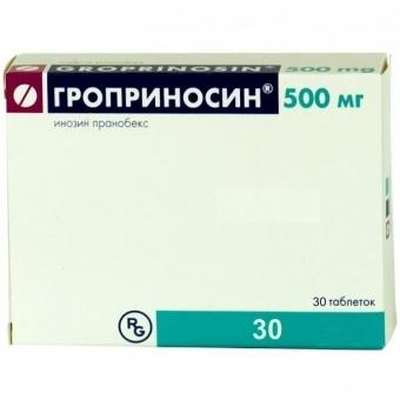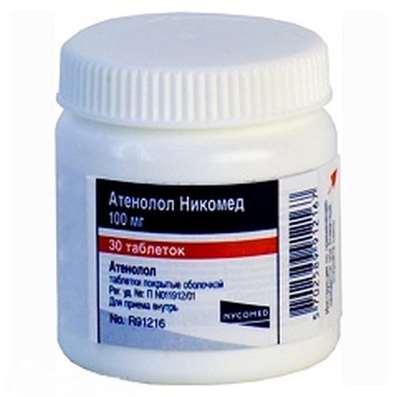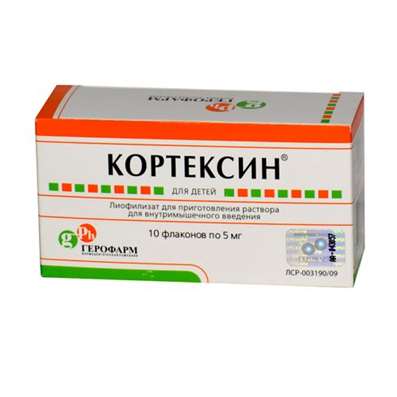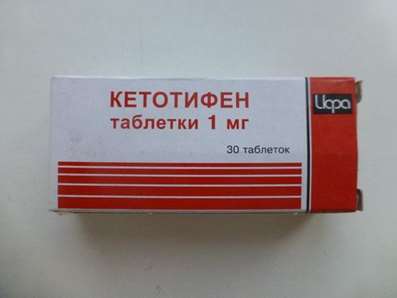Instruction for use: Aclidinium bromide + Formoterol (Aclidinii bromidum + Formoterolum)
I want this, give me price
chemical name
2- (Dimethylamino) ethyl ester of α- (1-hydroxy-cyclopentane) benzene acetic acid (as hydrochloride)
Pharmacological group
M Cholinolytics in combinations
Beta-adrenomimetics in combinations
The nosological classification (ICD-10)
J44 Other chronic obstructive pulmonary disease
Allergic bronchitis, Bronchitis asthma, Asthmatic bronchitis, wheeze bronchitis, Bronchitis is an obstructive, bronchi disease, Shortness of sputum in acute and chronic respiratory diseases, Cough in inflammatory diseases of the lung and bronchus, Reversible airflow obstruction, Reversible obstructive airway disease, Obstructive bronchitis disease, Obstructive lung disease, Obstructive bronchitis, Spastic bronchitis, Chronic lung disease, Chronic nonspecific lung diseases, Chronic obstructive pulmonary disease, Chronic obstructive bronchitis, Chronic obstructive airway disease, Chronic obstructive pulmonary disease, Restrictive lung pathology
J44.9 Chronic obstructive pulmonary disease, unspecified
Obstructive pulmonary diseases, Bronchial obstruction, bronchial obstruction, Exacerbation of chronic obstructive pulmonary disease, reversible airflow obstruction, Reversible airway obstruction, panbronchiolitis, Panbronhit, COPD, Chronic pulmonary infection, Chronic infection of the lower respiratory tract, Chronic obstructive pulmonary disease, Chronic obstructive pneumonia, Chronic lung disease, Chronic obstructive pulmonary disease, Chronic bronchopulmonary disease, Chronic broncho-pulmonary diseases, Airway obstruction
Code CAS 512-15-2
Characteristics
Combination of a muscarinic receptor antagonist + β2-adrenergic receptor agonist.
Pharmacology
Pharmacology
Pharmacological action - bronchodilating, m-holinoblokiruyuschee, beta 2 - adrenomimetik
Mechanism of action
The combination of aclidinium bromide + formoterol contains two bronchodilators: aclidinium bromide is an antagonist of muscarinic long-acting receptors (also called anticholinergic) and a formoterol agonist of long-acting β2-adrenergic receptors. The combination of these substances with different mechanisms of action provides an additive effect compared with the use of individual components. Due to the difference in the density of muscarinic and β2-adrenergic receptors in the central and peripheral respiratory tract, muscarinic receptor antagonists are more effective in relaxing the central airways, and β2-adrenergic receptor agonists are peripheral airways, so the use of combination therapy can enhance the beneficial effect on lung function.
Aclidinum bromide is a competitive, selective antagonist of muscarinic receptors with a longer binding time to M3 receptors than to M2 receptors. M3 receptors serve as intermediaries in the contraction of the smooth muscles of the respiratory tract. Inhaled aclidinium bromide acts locally in the lungs as an antagonist of the M3 receptors of the smooth muscles of the respiratory tract and causes bronchodilation. The use of aclidinium bromide in patients with COPD also causes a decrease in the severity of symptoms, improvement in the health-related health condition, a reduction in the frequency of exacerbations, and improved exercise tolerance. Since aclidinium bromide is rapidly degraded in blood plasma, the amount of systemic anticholinergic side effects is low.
Formoterol is a potent selective agonist of β2-adrenergic receptors. Bronchodilation is achieved by relaxing the smooth muscles of the respiratory tract due to an increase in the level of cAMP after activation of adenylate cyclase. In addition to improving lung function, formoterol reduces the severity of symptoms and improves the quality of life in patients with COPD.
Pharmacodynamics
Clinical studies have shown that the combination of aclidinium bromide + formoterol provides a clinically significant improvement in lung function (estimated by FEV for 1 s (OFB1) for more than 12 hours after use.
The combination of aclidinium bromide + formoterol has a rapid onset of action - within 5 min after the first inhalation compared with placebo. The onset of action of the combination of aclidinium bromide + formoterol was comparable to the effect of a high-speed agonist of β2-adrenoreceptors of formoterol at a dose of 12 μg. The maximum bronchodilation (maximum FEV1) compared with baseline was achieved from the first day (304 ml) and was maintained during the entire period of therapy lasting more than 6 months (326 ml).
Electrophysiology of the heart
There was no clinically significant effect of the combination of aclidinium bromide + formoterol on ECG parameters, including the QT interval, as compared with acupuncture bromide, formoterol and placebo, as well as heart rate during daily monitoring by Holter.
Clinical efficacy
A Phase III clinical study program involving approximately 4,000 patients with a clinical diagnosis of moderate to severe COPD included two 6-month, randomized, placebo and active control (ACLIFORM-COPD and AUGMENT) trials, a 6-month extended phase of the AUGMENT study, and an additional 12 -month randomized controlled trial.
In long-term safety studies, the combination of aclidinium bromide + formoterol showed consistent efficacy without signs of tachyphylaxis for a duration of application of more than 1 year.
Effect on lung function
The combination of aclidinium bromide + formoterol (340 + 11.8 μg / dose twice a day) provided a clinically significant improvement in lung function (FEV1, forced vital capacity and inspiratory capacity) compared with placebo. Clinically significant bronchodilator effect was achieved within 5 minutes after application of the first dose and was maintained throughout the inter-dose interval.
In the ACLIFORM-COPD trial, the combination of aclidinium bromide + formoterol provided an improvement in the FEV1 1 h after application of 299 and 125 ml, respectively, compared with placebo and akolidinium bromide (p <0.0001 in both comparisons) and improvement in residual FEV1 compared with placebo and formoterol 143 and 85 ml, respectively (p <0.0001 in both comparisons). In the AUGMENT study, improvement in FEV1 1 hour after application compared with placebo and aclidinium bromide was 284 and 108 mL, respectively (p <0.0001 in both comparisons), and an improvement in residual FEV1 compared to placebo and formoterol was 130 (p <0 , 0001) and 45 ml (p = 0.01), respectively.
Relieving symptoms and improving the health status of the disease
Shortness of breath and other symptoms. The combination of aclidinium bromide + formoterol provided a clinically significant improvement in dyspnea (assessed by the transient dyspnea index (TDI) with an increase in the TDI index at 6 months of therapy compared with placebo by 1.29 units in the ACLIFORM-COPD study (p <0.0001 ) And 1.44 units in the AUGMENT study (p <0.0001).
A combined analysis of these two studies showed that the use of the combination of aclidinium bromide + formoterol is associated with a statistically significant improvement in the TDI index compared with that of aclidinium bromide (0.4 units, p = 0.016) or formoterol (0.5 units, p = 0.009 ).
The combination of aclidinium bromide + formoterol improved daytime symptoms of COPD, in particular, shortness of breath, chest symptoms, coughing and sputum separation (assessed using the general E-RS index), and overall nighttime symptoms, early morning symptoms and symptoms limiting activity In the early morning hours, compared with placebo, aclidinium bromide and formoterol, but this improvement was not always statistically significant. The combination of aclidinium bromide + formoterol did not show a statistically significant decrease in the average number of nocturnal awakenings due to COPD, compared with placebo or formoterol.
Quality of life due to health
In the AUGMENT study, the combination of aclidinium bromide + formoterol provided a statistically significant improvement in the health status associated with the disease (assessed using the St. George's Respiratory Response System (SGRQ), improving the overall SGRQ index by 4.35 units compared with placebo (p <0, In the ACLIFORM-COPD study, there was only a slight decrease in the overall SGRQ index compared with placebo due to an unexpected response to placebo therapy (p = 0.598), and the percentage of patients achieving clinically significant improvement from the baseline was 55.3% Group combination of aclidinium bromide + formoterol and 53.2% in the placebo group (p = 0.669).
A combined analysis of the data from these two studies showed a greater improvement in the overall SGRQ index when using the combination of aclidinium bromide + formoterol compared with formoterol (-1.7 units, p = 0.018) or akladinium bromide (-0.79 units, p = 0.273).
Reduction in the frequency of exacerbations of COPD
In a combined analysis of the efficacy of two 6-month studies, a statistically significant 29% reduction in the frequency of moderate or severe exacerbations (requiring antibiotic or corticosteroid therapy or leading to hospitalization) was compared with combination therapy with aclidinium bromide + formoterol compared with placebo (frequency at (P = 0.036), as well as an increase in the time to the first exacerbation of moderate or severe severity compared with placebo (risk ratio 0.7, p = 0.027).
The use of emergency therapy
The combination of aclidinium bromide + formoterol reduced the need for an emergency medicine for more than 6 months compared to placebo (by 0.9 inhalations / day (p <0.0001), aclidinium bromide (by 0.4 inhalations / day (p <0.001 ) And formoterol (by 0.2 inhalations / day (p = 0.062).
Pharmacokinetics
The pharmacokinetics of aclidinium bromide and formoterol for inhalation in combination did not differ significantly from those observed with the use of individual components.
Absorption. After a single inhalation, the combination of aclidinium bromide + formoterol, aclidinium bromide and formoterol were quickly absorbed into blood plasma with Cmax reaching for 5 min in healthy volunteers and for 24 min in COPD patients. The maximum Css of bromide and formoterol acclimation in patients with COPD who received the combination of aclidinium bromide + formoterol twice daily for 5 days was achieved within 5 min after inhalation and were 128 and 17 pg / ml, respectively.
Distribution. The total number of lungs after inhalation of aclidinium bromide was approximately 30% of the metered dose. The binding of ascidinium to plasma proteins in vitro is most likely to correspond to the binding of metabolites to proteins due to rapid hydrolysis of aclidinium bromide in blood plasma. Binding to plasma proteins was 87% for the carboxylic acid derivative and 15% for the alcohol derivative. The main protein of the blood plasma, which binds associadinium bromide, is albumin.
The binding of formoterol to plasma proteins is 61-64% (34%, mainly albumin). There was no saturation of the binding sites in the range of concentrations achieved with the combination of Aklidinium Bromide + Formoterol in therapeutic doses.
Biotransformation. Aklidinium bromide is rapidly and intensively hydrolyzed to a pharmacologically inactive alcohol derivative and a carboxylic acid derivative. There is a chemical (non-enzymatic) and enzymatic hydrolysis under the action of esterases. The main esterase involved in hydrolysis in humans is butyrylcholinesterase. The concentration of the acid metabolite in the blood plasma after inhalation is approximately 100 times higher than the concentration of the alcohol metabolite and the unchanged active substance.
Low absolute bioavailability of aclidinium bromide with inhalation (<5%) is due to its intensive systemic and presystemic hydrolysis both in the lungs and in oral administration. Biotransformation with the participation of cytochrome isoenzymes CYP450 plays an insignificant role in the overall metabolic clearance of aclidinium bromide. In vitro studies have shown that aclodynia at a therapeutic dose or its metabolites do not inhibit and induce any CYP450 isoenzymes and do not inhibit esterases (carboxyl esterase, acetylcholinesterase and butyrylcholinesterase). It has also been established in vitro that aclidinium bromide or its metabolites are not substrates or P-gp inhibitors.
Formoterol is excreted mainly through metabolism. The main route is direct glucuronization with O-demethylation and subsequent conjugation with glucuronide. In the O-demethylation of formoterol, the isozymes CYP2D6, CYP2C19, CYP2C9 and CYP2A6 are involved. In therapeutically significant concentrations, formoterol does not inhibit the CYP450 isoenzymes.
Excretion. After the inhalation of the combination of aclidinium bromide + formoterol at a dose of 340 + 11.8 μg, the final T1 / 2 aclidinium bromide and formoterol are approximately 5 and 8 hours, respectively.
After intravenous administration of 400 μg of radiolabeled aclidinium to healthy volunteers, about 1% of the administered dose was excreted unchanged in urine. Up to 65% of the dose was excreted in the form of metabolites with urine and up to 33% in the form of metabolites with feces. After inhalation of 200 and 400 μg of aclidinium bromide in healthy volunteers and patients with COPD, excretion of unaffected urine acidity in the urine was very low (approximately 0.1% of the administered dose), which indicates that renal clearance plays a minor role in the overall clearance of aclidinium bromide from plasma Blood.
The bulk of the administered dose of formoterol was metabolized in the liver with subsequent excretion by the kidneys. After inhalation, 6-9% of the delivered dose of formoterol was excreted in the urine unchanged or in the form of conjugates of formoterol.
Special patient groups
Elderly age. Studies of the pharmacokinetics of the combination of aclidinium bromide + formoterol in elderly patients have not been conducted. Because elderly patients do not need to adjust the dose of aclidinium bromide or formoterol in the monotherapy regimen, when using the combination of aclidinium bromide + formoterol, dosage adjustment is also not required.
Impaired renal and hepatic function. Data on the features of the combination of aclidinium bromide + formoterol in patients with impaired renal or hepatic function are absent. Since patients with a dysfunction of the nights or liver do not need to correct the dose of aclidinium bromide or formoterol in the monotherapy regimen, when using the combination of aclidinia / formoterol, dose adjustment is also not required.
Indication
Supportive bronchodilator therapy to alleviate the symptoms of chronic obstructive pulmonary disease in adults.
Contraindications
Hypersensitivity to combination components; Age to 18 years.
Restrictions on the use
Myocardial infarction, transferred during the previous 6 months; Unstable angina; First detected arrhythmia during the previous 3 months; Hospitalization for the previous 12 months for heart failure of grade III and IV functional classes according to the NYHA classification or other severe cardiovascular diseases; Interval QTc (by the method of Bazetta)> 470 ms; Concomitant drug therapy, extending the QTc interval; Convulsive disorders; Thyrotoxicosis; Pheochromocytoma; Symptomatic hyperplasia of the prostate; Retention of urine; Angle-closure glaucoma; Hypokalemia.
pregnancy and lactation
Data on the use of the combination of aclidinium bromide + formoterol in pregnant women are absent.
In animal studies, fetotoxicity was noted only at doses far exceeding the maximum dose of bromide austenium in humans and undesirable effects in studies of reproductive toxicity only at very high system exposures of formoterol.
During pregnancy, the combination of aclidinium bromide + formoterol should be used only when the expected benefit exceeds the potential risks.
It is not known whether aclidinium bromide (and / or its metabolites) or formoterol is excreted in breast milk. Because preclinical studies have shown that small amounts of bromide (and / or its metabolites) and formoterol penetrate into the milk, during the breast-feeding period, the combination of aclidinium bromide + formoterol should be used only when the expected benefit for the woman exceeds the potential risk for the infant.
Fertility. Preclinical studies revealed a slight decrease in fertility only when administered at doses significantly exceeding the maximum doses of bromide and formoterol in humans. It is unlikely that the use of a combination of aclidinium bromide + formoterol at the recommended dose will affect fertility in humans.
Side effects
The following safety information is based on experience with the combination of aclidinium bromide + formoterol (at the recommended therapeutic dose up to 12 months) and its individual components.
Security Profile Overview
The undesirable reactions associated with the use of the combination of aclidinium bromide + formoterol are similar to those observed with the use of its individual components. Since this combination contains aclidinium bromide and formoterol, then against the background of its application can be expected the undesirable reactions described for these components.
The most frequently observed undesirable reactions with the combination of aclidinium bromide + formoterol were nasopharyngitis (7.9%) and headache (6.8%).
The incidence of adverse reactions is based on an estimate of the overall response rates observed with a combination of akolidinium bromide + formoterol at a dose of 340 + 11.8 μg as part of a pooled analysis of randomized, placebo-controlled, Phase III clinical trials lasting at least 6 months.
The frequency of unwanted reactions is presented using the following notation: very often (≥1 / 10); Often (≥1 / 100, <1/10); Infrequently (≥1 / 1000, <1/100); Rarely (≥1 / 10000, <1/1000); Very rarely (<1/10000) and the frequency is unknown (it is impossible to estimate from available data).
Infectious and parasitic diseases: often - nasopharyngitis, urinary tract infection, sinusitis, tooth abscess.
From the immune system: rarely - hypersensitivity; Frequency unknown - angioedema, anaphylactic reaction.
From the side of metabolism and nutrition: infrequently - hypokalemia, hyperglycemia.
Mental disorders: often - insomnia, anxiety; Infrequent excitation.
From the nervous system: often - headache, dizziness, tremor; Infrequently - a violation of taste.
From the side of the organ of vision: infrequently - blurred vision.
From the heart: infrequently - tachycardia3, prolongation of the interval QTc on ECG3, palpitation1; Frequency unknown - angina pectoris4.
From the respiratory system, chest and mediastinum: often - cough; Infrequently - dysphonia, irritation of the pharynx; Rarely - bronchospasm, incl. paradoxical.
On the part of the digestive system: often - diarrhea, nausea, dry mouth; Infrequently - stomatitis.
From the skin and subcutaneous tissues: infrequently - rash, itchy skin.
From the musculoskeletal system and connective tissue: often - myalgia3, muscle spasms3.
From the side of the kidneys and urinary tract: infrequently - retention of urine.
General disorders and disorders at the injection site: often - peripheral edema.
Laboratory and instrumental data: often - increased activity of CK in the blood; Infrequently - an increase in AD.
Interaction
Drugs for COPD treatment
The combined use of a combination of aclidinium bromide + formoterol with other anticholinergics and / or long-acting β2-adrenergic receptor agonists has not been studied and is not recommended.
Although formal studies of drug interactions between the combination of aclidinium bromide + formoterol in vivo have not been performed, it has been used concomitantly with other drugs for COPD therapy, including short-acting β2-adrenergic receptor agonists, methylxanthines, and oral and inhaled glucocorticosteroids, without clinical signs of drug interaction.
Metabolic interactions
In vitro studies, it has been established that interaction between active dose in the therapeutic dose or its metabolites is not expected with substrates of P-gp and LS, metabolized by CYP450 isoenzymes and esterases. In therapeutically significant concentrations, formoterol does not inhibit the CYP450 isoenzymes.
Drugs that cause hypokalemia
The concomitant use of methylxanthine derivatives, steroids or potassium-sparing diuretics may enhance the possible hypokalemic effect of β2-adrenergic receptor agonists, so caution should be exercised when they are combined (see "Precautions").
Blockers of β2-adrenergic receptors
Blockers of β-adrenergic receptors can weaken or level the effect of β2-adrenergic receptor agonists. If it is necessary to use blockers of β-adrenergic receptors (including in the form of eye drops), the appointment of cardioselective β-adrenergic receptor blockers is preferable, although they should be used with caution.
Other pharmacodynamic interactions
Caution is advisable to use the combination of aclidinium bromide + formoterol in patients receiving drugs that extend the QTc interval, such as MAO inhibitors, tricyclic antidepressants, antihistamines or macrolides, as they can potentiate the effect of formoterol on CCC. LS prolonging the interval QTc, increase the risk of ventricular arrhythmia.
Overdose
Experience with the treatment of an overdose combination of aclidinium bromide + formoterol is limited.
Symptoms: high doses of this combination can lead to an increase in symptoms and manifestations of anticholinergic and / or β2-adrenergic action, the most frequent of which are blurred vision, dry mouth, nausea, muscle spasm, tremor, headache, palpitations and hypertension.
Treatment: In case of an overdose, use of the combination of aclidinium bromide + formoterol should be discontinued. Supportive and symptomatic therapy is indicated.
Routes of administration
Inhalation.
Precautions
Bronchial asthma
The combination of aclidinium bromide + formoterol should not be used in bronchial asthma, clinical studies of this combination in bronchial asthma have not been conducted.
Paradoxical bronchospasm
In clinical studies, no cases of paradoxical bronchospasm have been observed with the combination of akolidinium bromide + formoterol at the recommended dose. However, paradoxical bronchospasm was observed in the course of another inhalation therapy. If it occurs, discontinue use and consider the possibility of alternative therapy.
The combination of aclidinium bromide + formoterol is not intended for relief of acute attacks of bronchospasm.
Impact on the CAS
The combination of aclidinium bromide + formoterol should be used with caution in patients who underwent myocardial infarction during the previous 6 months, with unstable angina first detected by arrhythmia during the previous 3 months, with a QTc interval (calculated by the Basett method)> 470 ms or hospitalized for Previous 12 months for heart failure of III and IV functional classes according to the NYHA classification, as these patients were not included in the clinical studies.
In individual patients, β2-adrenoreceptor agonists can cause an increase in heart rate and blood pressure, ECG changes in the form of flattening of the T wave, depression of the ST segment and prolongation of the QTc interval. If these effects develop, early termination of therapy may be required. Long-acting β2-adrenergic agonists should be used with caution in patients with a prolonged QTc interval currently or in the past, or receiving drugs that affect the duration of the QTc interval (see "Interaction").
System Effects
The combination of aclidinium bromide + formoterol should be used with caution in patients with severe impairment from the CCC, convulsive disorders, thyrotoxicosis and pheochromocytoma.
When using high doses of β2-adrenergic agonists, metabolic effects can be developed in the form of hyperglycemia and hypokalemia. In clinical trials of Phase III, the frequency of a significant increase in blood glucose levels with the combination of akladinium bromide + formoterol was low (0.1%) and similar to the placebo group. Hypokalemia is usually transient and does not require additional therapy. In patients with severe COPD hypokalemia may be potentiated by hypoxia and concomitant therapy (see "Interaction"). Hypokalemia may increase the risk of arrhythmia.
Due to anticholinergic activity, the combination of aclidinium bromide + formoterol should be used with caution in symptomatic prostatic hyperplasia, urinary retention, or angle-closure glaucoma (although direct contact with the eyes is very unlikely). Dry mouth, marked against the background of anticholinergic therapy, while retaining for a long time can lead to tooth decay.
Influence on the ability to drive vehicles and work with machinery. The use of the combination of aclidinium bromide + formoterol does not, or to a small extent, affect the ability to drive vehicles and work with mechanisms. The development of blurred vision or dizziness can affect the ability to drive vehicles or work with mechanisms.

 Cart
Cart





